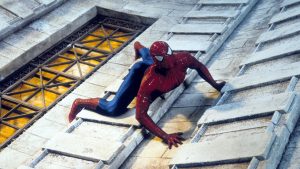
This article is presented by
I was 10 years old the first time I saw a Terminator. It was the year The Matrix was released, and I was on the hunt for everything sci-fi and cyberpunk. My local library carried VHS tapes at the time, and The Terminator was one of the few coveted R-rated films I had been wanting to get my hands on. On my first watch, I made it as far as the T-800 cutting out his eye to reveal the mechanical socket underneath before I turned it off. It scared the shit out of me. For weeks, I had nightmares about a man ripping off his face to reveal the machine underneath.
Several years later, I returned to The Terminator and its sequel. This time, I watched them through to the end. Like so many others, my mind was blown by the genre-defining action, suspense, and blockbuster filmmaking that James Cameron and co. brought to the follow-up.
But I still felt haunted by my nightmares. I still felt haunted by The Terminator.
Over several decades and a few more Terminator films, that initial shell shock never went away. There was something to the first film that was elemental, primordial, nakedly fierce. The filmmaking itself felt dangerous, muscular, and, most of all… scary.
In the fall of 2020, I was in the middle of my own war with machines. While in the heat of directing my feature debut, Mother/Android (which features an image in its climax straight out of my nightmares where a face is ripped off to reveal the machine underneath), I got a call that Skydance and Netflix were partnering to make a Terminator anime. A true anime, as the work was going to be done in Japan, and their partners were the famed artists of Production I.G. They asked me if I had any instincts about where to take the story.
Instantly, I was revisited by the ghost of The Terminator. As the franchise has veered far into action, I’d spent years daydreaming about a version of Terminator that kept one foot grounded in the horror/slasher vibe. This was a huge piece of the puzzle.
Whenever you’re making something animated, a critical question must be asked: why does this have to be animated? Sometimes, it’s a hard question to answer, but not in this case. The first two Terminator films are love stories. The first, a love story about a man who crosses time to be with the woman of his dreams. The second, a story of a mother’s love. Both sweep through decades, and in converting into animation, it felt like there was an opportunity to, over multiple seasons, tell a multi-generational story about lovers, parents, children, siblings, and family bonds, stretched over decades and seen through the prism of wars past, present… and yes, Future Wars, too.
It’s always a daunting undertaking to take something people love and revere to new places. Finding the balance of injecting new ideas and approaches (otherwise why even do it?) with the need to preserve the elements that make Terminator feel like Terminator. Here, at the end of season one, I look to the past, and my adoration and respect for all the artists who created this world is at an all-time high. Here in the present, everyone involved in the making of this show has come at it from the perspective of being a fan. We all tried to bring new life and old horror together to give you something worthy of your time and worthy of The Terminator. And as for the future…
-Mattson Tomlin
Showrunner
Terminator Zero comes to Netflix on Aug 29.
The post Terminator Zero Showrunner on Creating the New Anime Series: “I Felt Haunted by The Terminator” appeared first on Den of Geek.









